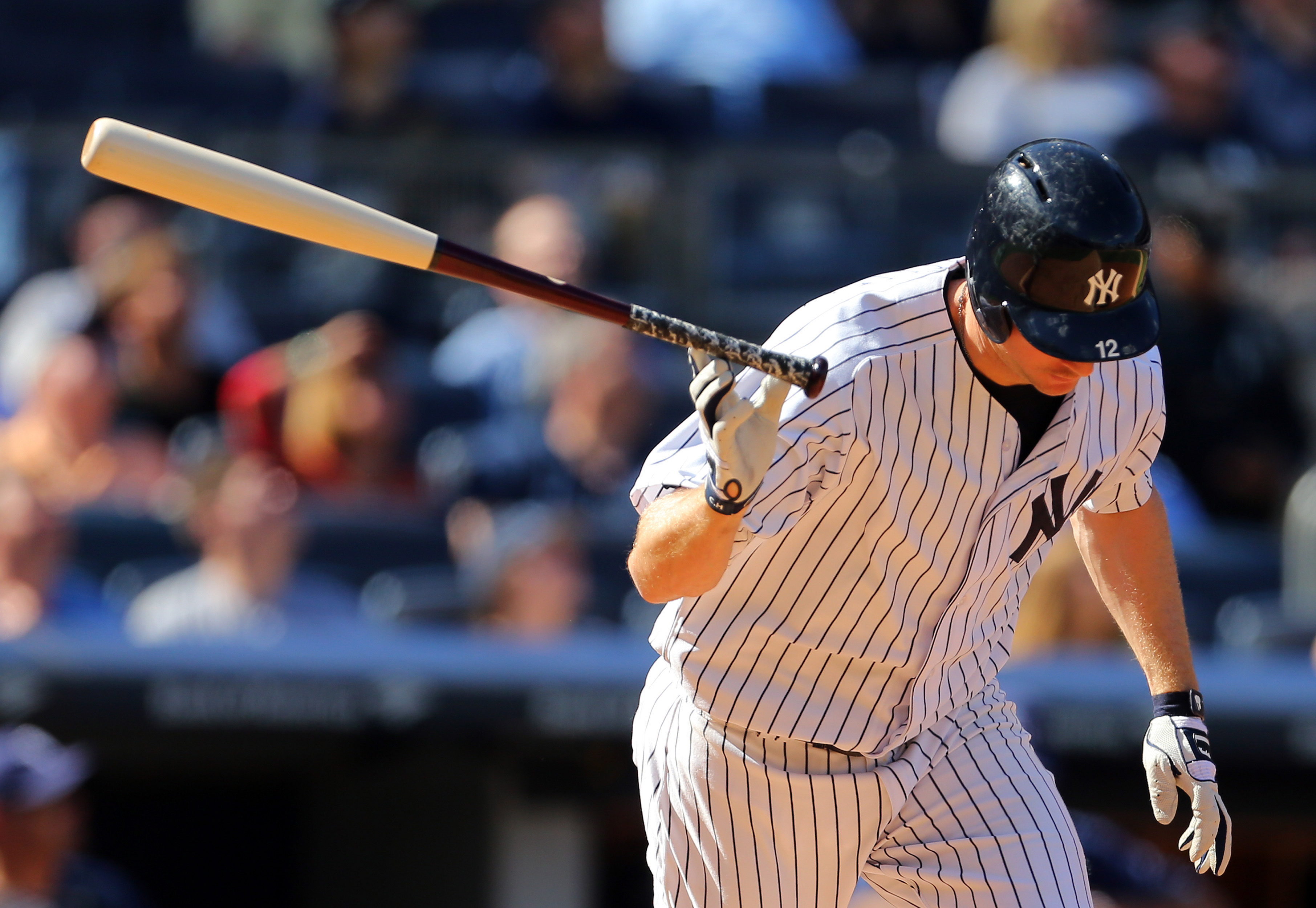Chase Headley is one of the few players in baseball who’s simultaneously plenty good and quite disappointing. In 2012, he knocked 31 balls over the fence while calling Petco Field home and the world hasn’t quite adjusted its expectations.
However, when the New York Yankees signed the third baseman to a four-year deal worth $52 million prior to the 2015 season they knew what they paying for. That contract was to pay a steady, durable starting third baseman with an above-average glove. The reason it looked like such a good decision at the time was that any offensive outburst a permanent move to Yankee Stadium elicited would be pure surplus value.
In the first year, things didn’t go exactly as planned. Headley had some uncharacteristic troubles in the field, but ultimately he paid was $13 million and worth $12.1 million. It wasn’t ideal, especially since free agent contracts should usually provide surplus value early on, but it was far from a disaster.
More troubling than Headley’s total production, however, was the continued disintegration of his offensive profile down to his pre-breakout levels. For the second time in his career he had an Isolated Slugging mark of .110 and a strikeout rate of 21 percent. He was trying to make powerful contact and missing his mark the majority of the time.
As a low-power, high-strikeout guy, Headley is relying on a respectable walk rate and some luck on batted balls in play to be even remotely valuable offensively. To give a sense of how troubling this profile is, the following chart shows last year’s qualified hitters with an ISO of .120 or less and a K% of 20 or more.
| Player | ISO | K% | BA | OBP | SLG | WAR |
|---|---|---|---|---|---|---|
| Austin Jackson | .118 | 23.9% | .267 | .311 | .385 | 2.4 |
| Chase Headley | .110 | 21.0% | .259 | .324 | .369 | 1.5 |
| Jace Peterson | .097 | 20.1% | .239 | .314 | .335 | 1.1 |
| Anthony Gose | .113 | 27.1% | .254 | .321 | .367 | 0.4 |
| Avisail Garcia | .108 | 23.5% | .257 | .309 | .365 | -1.1 |
| Chris Owings | .095 | 26.1% | .227 | .264 | .322 | -1.4 |
This is not excellent company to be keeping, and barring an extraordinary BABIP, these types of numbers really can’t add up to a strong offensive contribution.
In theory, Headley does not need to be a particularly good hitter to be valuable to the Yankees, or be worth his salary. That said, 2015 has put his ability to be a plus defender in some doubt, and he’s getting to an age where his range is certainly in decline and his bat will probably need to carry him a little bit further.
Unfortunately for the Yankees, last season’s results show that simply relocating will not unlock the power in Headley’s bat that has been hibernating since 2012. In fact, what they got was a slap hitter who did an acceptable job at a position that isn’t particularly difficult—with a couple too many blunders to boot. That package added up to a 1.5 WAR, which wasn’t the end of the world, but they could have used and reasonably expected a bit more.
The Yankees need Headley to be better the deeper he gets into his contract, and at his age the odds are not on their side. Power and contact are the two primary hitting skills that scouts look for in a ballplayer, and the Yankees’ third baseman is faltering in both areas as he enters his 30’s. Without an improvement in either category, it’s hard to see how he will turn things around as he’s hemmed in by an untenable offensive profile.
When the Yankees signed Headley, they took a risk by investing in a glove-first player on the wrong side of 30, and now the downside of that risk is becoming more palpable.
Lead photo: Adam Hunger/USA Today Sports
